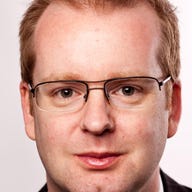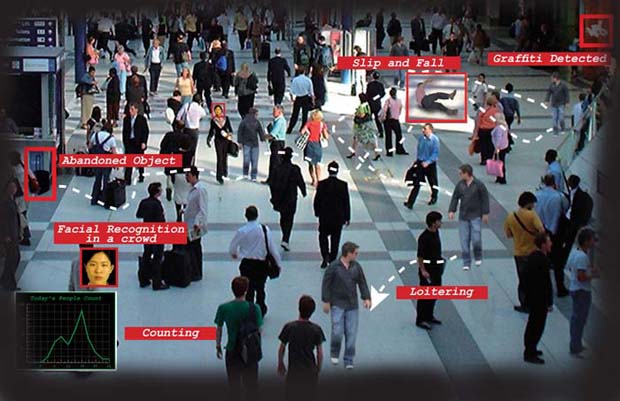Tracking terrorists with iOmniscient

company profile Advanced surveillance technology that can help identify would-be terrorists and criminals hiding in crowds is winning international recognition for Sydney company iOmniscient.

(Credit: iOmniscient)
In January it won the Global Security Challenge for Crowded Place award, which recognises the company that brings fresh thinking to the problem of protecting the public from the threat of terrorism in crowded urban environments.
iOmniscient's chief executive officer Dr Rustom Kanga says that many surveillance systems use video cameras to detect activity in mostly empty spaces, but his company has specialised in solving that problem for crowded environments such as train stations, airports, shopping malls and city streets.
Kanga says that analysing crowded scenes is considered to be the hardest task in artificial intelligence-based video analysis.
"Our speciality is coping with crowds — recognising people in crowds, recognising behaviour in crowds, and so on," Kanga says. "Our approach has been to focus on doing the difficult things, and that's how we can stand out from our competition in an otherwise very crowded market.
"Nobody else can do what we do, and they won't be able to do it for a long time."
Thousands of cameras are installed in public facilities by city councils, public transport operators and airports each year, but Kanga says most cannot be effectively monitored live and are primarily used as recording devices for review after an event has occurred. Those cameras that do use video analysis are only focussed on detecting events in an empty scene, such as a single person jumping over a fence.
"Terrorists will not pick a nice empty spot to leave a bomb," Kanga says. "iOmniscient's focus is on automated surveillance in the real and practical environment that we all live in, to protect us when we are in our railway stations and airport lobbies. It ensures we are safe in our streets and our shopping malls."
Founded in 2001, iOmniscient has developed a range of software-based detection and identification systems that can operate simultaneously on the same camera, and can detect activities in crowded scenes despite heavy motion and obscuration.
The technology can work with existing closed circuit television (CCTV) systems to detect activity such as left or removed objects, slips and falls, loitering, graffiti, and can even identify individual faces and licence plates.
Kanga says it can also detect incidents that are virtually invisible to the human operator, and every system is armed with the ability to minimise false alarms, which is the major problem for most CCTV systems.
Over the years the company has been the recipient of numerous awards, including the 2005 ATS Patron's Award.
iOmniscient's systems have been implemented at airports including Mexico City, Kuala Lumpur and Anatalya in Turkey. It is used on the world's fastest train from Wuhan to Guangzhou in China as well as in railway systems in Chicago, Milan, Rotterdam and Montreal.
Kanga says the energy company BP uses iOmniscient to protect its pipelines and refineries in difficult terrain. It is also used by shopping centres to count people traffic, and by art galleries to prevent theft.
International sales currently account for more than 90 per cent of the company's revenue. Kanga says the first customer that iOmniscient won was back in 2004 in the UK. The company's focus from the start has been to be the worldwide leader. He says iOmniscient's brand is recognised internationally and several organisations specify the company's products as a mandatory element of their security requirements.
Today, iOmniscient employs almost a hundred people around the world in locations including China, India, UAE, Egpyt, Mexico, Europe and North America. A core team of 25 in Australia focuses on product development and is supported by development resources in Toronto and Delhi.
Perhaps the most difficult market to penetrate has been the US. "We have found the attitudes there, especially in government and defence, favour local companies despite the free trade agreement," says Kanga. "It's something we have to take into our stride."
While iOmniscient has come a long way from its initial success in identifying bags in a crowded environment, Kanga says AI technology is still at the beginning of its evolution.
"But we know that there are so many more things that could be done in the future. We know how the technology can be improved and our focus is on this continuous improvement," he says.
Kanga says iOmniscient has benefited from being built without significant venture capital investment, which he says has isolated it from the short-term pressures that can be exerted by external shareholders and allowed it to continue investing through the financial crisis when many of its international competitors were significantly constrained.
"Today we have a far greater technological lead on our competition than we had even two years ago," says Kanga.
While the company is growing rapidly, Kanga says the focus is on maintaining that technological leadership.
"Our focus is on having the world's best technology for automated surveillance and on having very happy customers," he says. "If we can do those two things well, growth and profitability are the natural result."